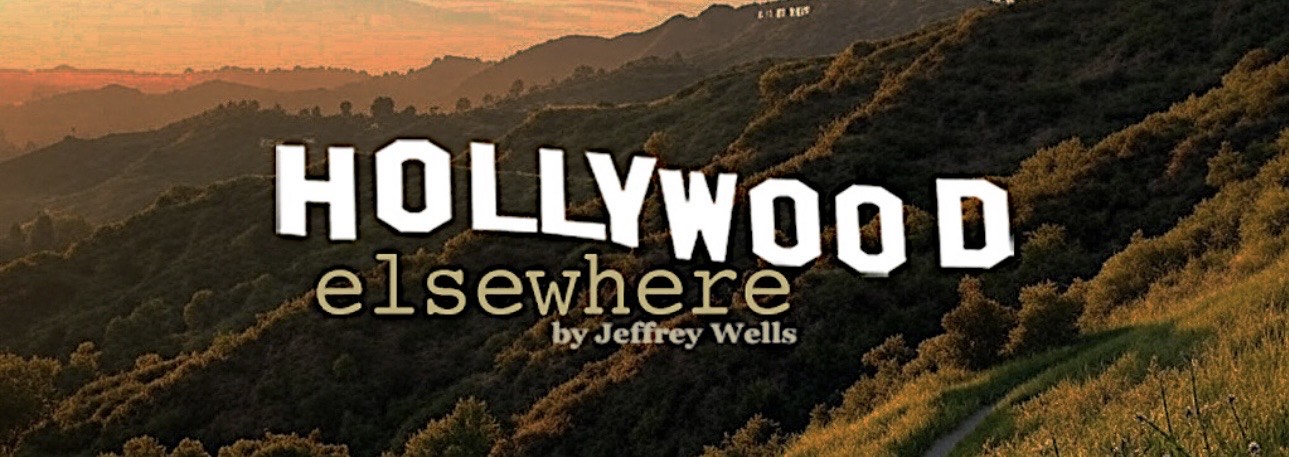I’m sorry but while sitting in my third-row seat at the Museum of Moving Image last Saturday evening, I would have been a much happier camper watching John Ford‘s The Horse Soldiers instead of The Searchers.
The former, released in 1959, has never been accused of being a great film — two years ago I called it steady, sturdy mid-range Ford — but it’s very watchable and oddly comforting, and it has no racism or bizarre atmospheric concepts (a family living alone in a water-less, soil-free Monument Valley) or anything that prompts strong disbelief.
That scene in which John Wayne‘s Union troops are hiding in a forest alongside a sizable-sized river as they listen to some Confederate troops sing a marching song, and doing so with the vocal expertise of the Mitch Miller singers and in harmony yet…gets me very time.
HE commenter “brenkiklco”: “Brilliant in patches but quite slight. The action is perfunctory. The charge at Newton Station is rather lamely staged. And there’s scarcely any climax at all. Ford reportedly just wanted to wrap the thing up after a stuntman died on the set. The romance is unconvincing. Most of the performances have that Fordian quality of slight, theatrical exaggeration. A hint of Victorian barnstorming that you either go with or you don’t. But Wayne and Holden make good frenemies, and there are several enjoyable scenes.
Posted on 6.4.22: I’ve had it up to here with the standard narrative about The Horse Soldiers being one of John Ford‘s lesser efforts. I know this sounds like heresy, but it may be my favorite post-1945 Ford film. I know that She Wore A Yellow Ribbon and The Searchers and The Man Who Shot Liberty Valance are widely regarded as more substantial and therefore “better”, but I don’t like watching them as much as The Horse Soldiers, and anyone who doesn’t like that can shove it.
A Civil War drama based on Grierson’s Raid of 1863, The Horse Soldiers is steady, solid, midrange Ford — well-produced and well-acted with good character arcs and flavorful Southern atmosphere. Plus it gets extra bonus points for being set in the South (green trees, green grass, plantations, swamps, bridges, rivers) and not in godforsaken Monument Valley.
Handsomely shot by William H. Clothier in a 1.66 aspect ratio, its very easy to watch — every time I pop it in I feel comfortable and relaxed. Partly because it has a minimum of Ford-bullshit distractions. My only real problem is a scene in which rebel troops are heard signing a marching tune exactly like the Mitch Miller singers. I also don’t like a scene in which a furious John Wayne throws down eight or nine shots of whiskey in a row — enough to make an elephant pass out.
There’s a scene in which a boys’ military academy is asked to attack Wayne’s Union regiment — a scene in which a mother drags her 10-year-old son, Johnny, out of a line of marching troops, only to lose him when Johny climbs out of his second-floor bedroom window to rejoin his fellows. It reminds me of that moment when Claudette Colbert collapses in a grassy field as she watches Henry Fonda marching off to fight the French in Drums Along The Mohawk.
I also love that moment in Newton Station in which Wayne senses something wrong when costar William Holden, playing an antagonistic doctor-surgeon, tells him that perhaps a too easily captured Confederate colonel (Carleton Young), an old buddy, isn’t the submissive, easily captured type — “He’s West Point, tough as nails…the man I knew could lose both arms and still try to kick you to death.”
Kino Lorber’s new 4K version of this 1959 film (which lost money, by the way, partly due to exorbitant salaries and producer participation deals) streets on 6.14.22
\
